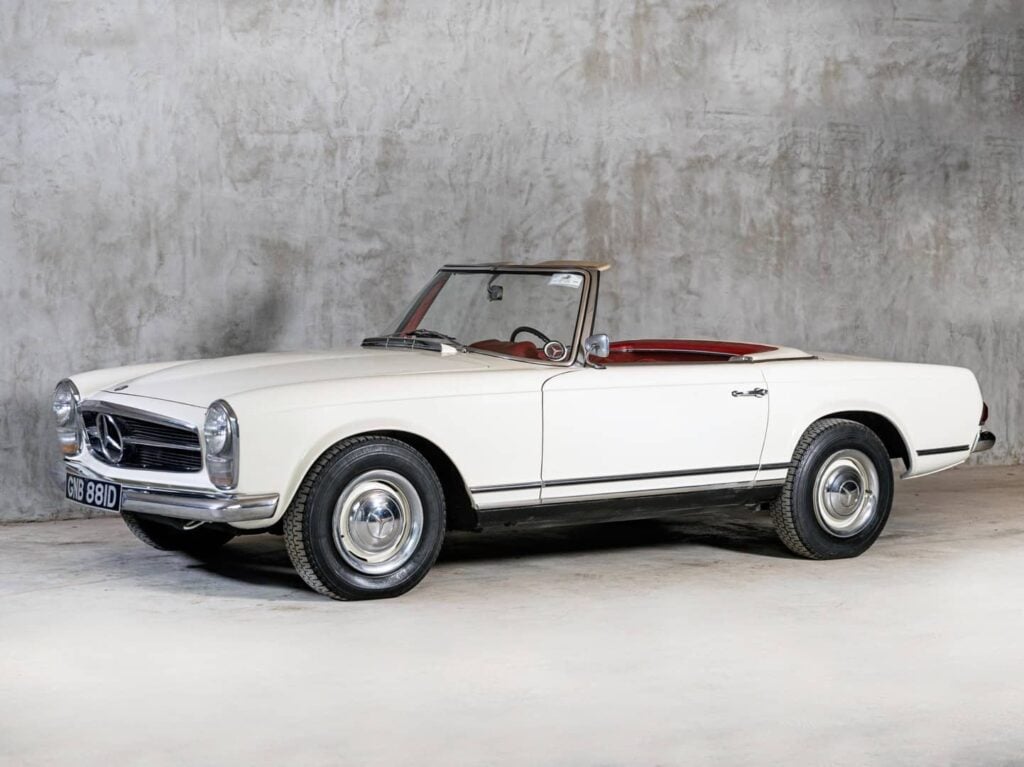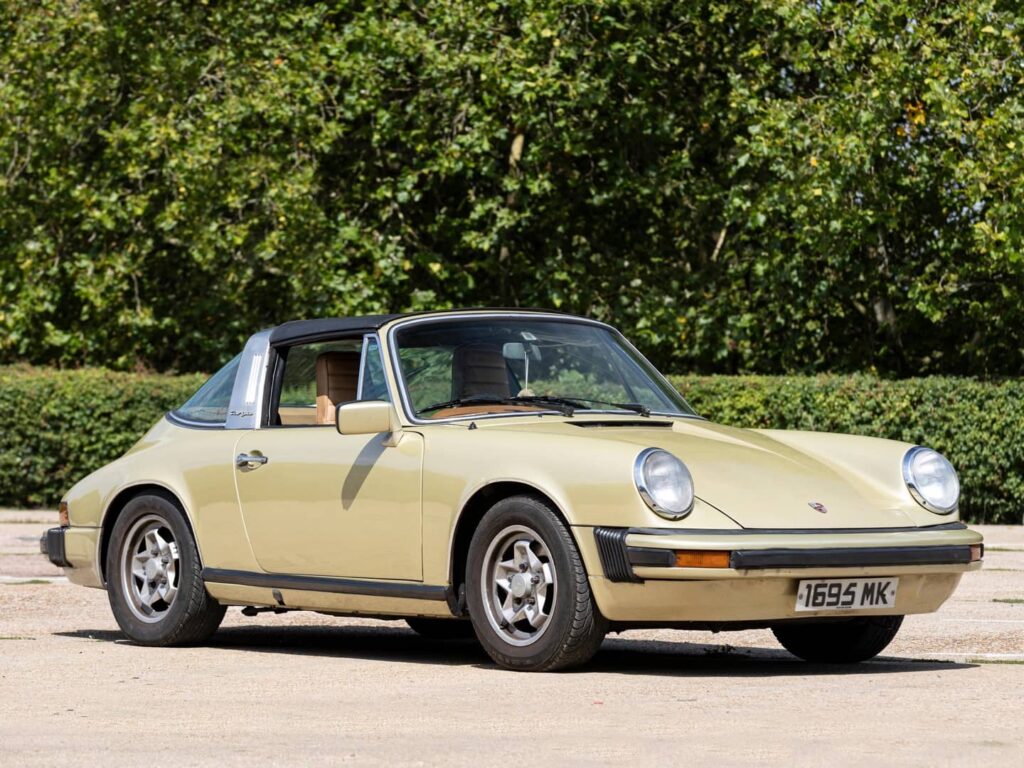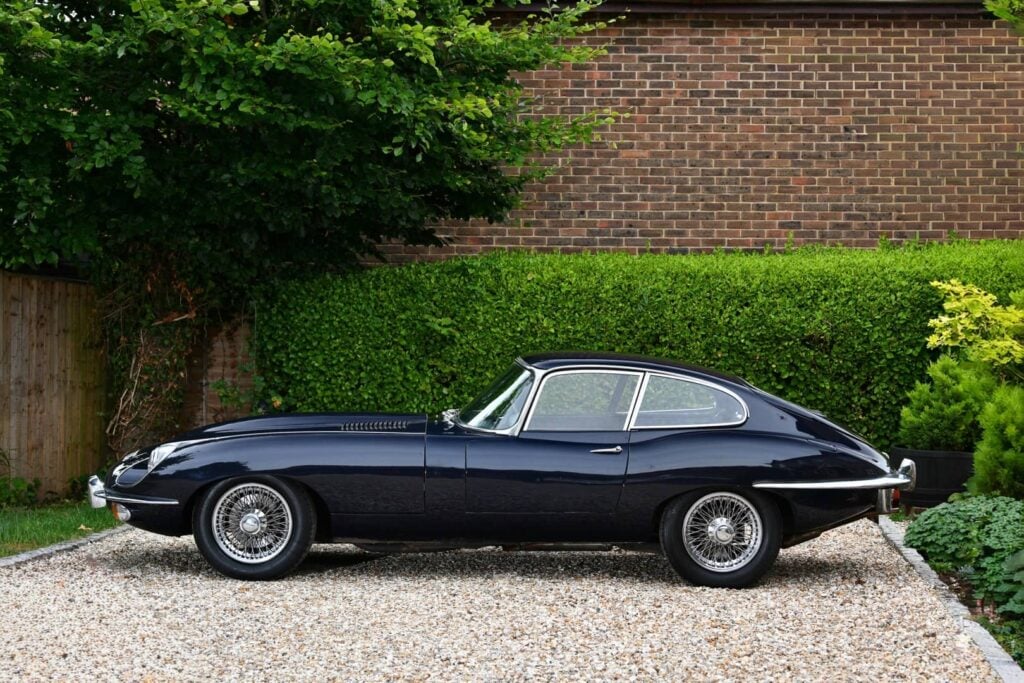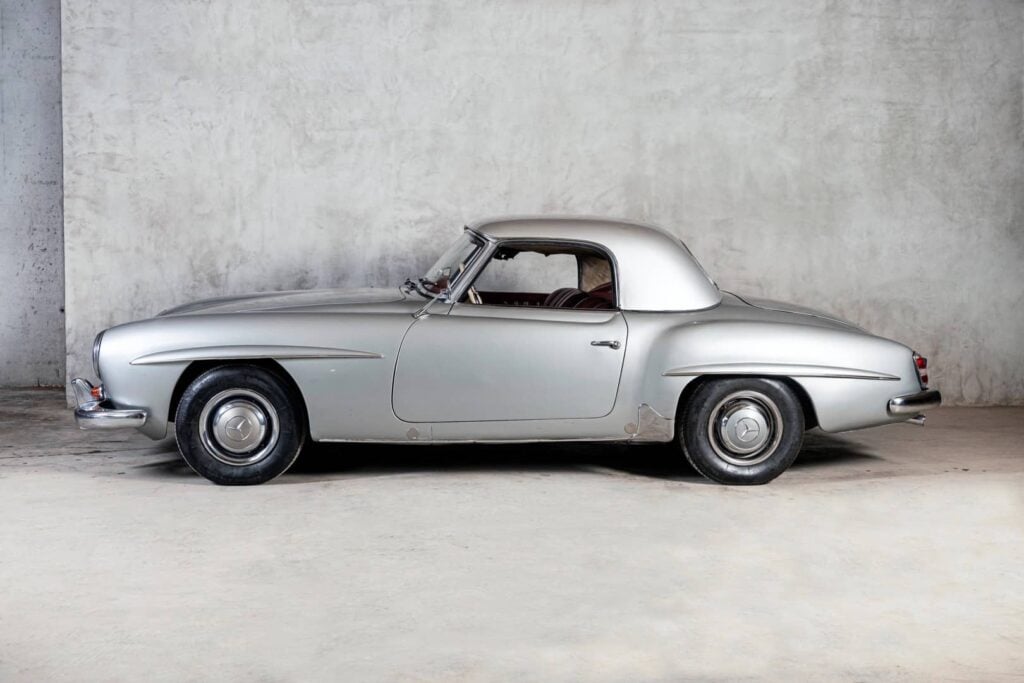2025 Bonhams Beaulieu Sale
Bonhams|Cars will return to the Beaulieu International Autojumble for the 2025 edition of their Beaulieu Sale. In addition to the auction plenty of other activities will be going on during the Autojumble including the National Motor Museum’s workshop team firing up the Sunbeam 1000HP for the first time in public in 90 years. But let’s take a closer look at some of the cars that will be offered by Bonhams at the Beaulieu Sale.

The Maserati Khamsin Coupé, a distinctive grand tourer produced from 1974 to 1982, marked a bold shift in the Italian automaker’s design philosophy. Following in the footsteps of the acclaimed Ghibli, the Khamsin was unveiled as a concept at the 1972 Turin Auto Show. Designed by the legendary Marcello Gandini at Bertone, it was a sharp, angular departure from Maserati’s previous models.
The car’s innovative styling was a highlight of the 1970s “wedge” design trend, featuring several unique elements, most notably the striking all-glass rear panel that provided improved visibility and a futuristic aesthetic. This design was Bertone’s first collaboration with Maserati and remains a testament to Gandini’s mastery of form and function.
The Khamsin was also a technological marvel, showcasing the influence of Maserati’s parent company at the time, Citroën. It incorporated a high-pressure hydraulic system that powered the speed-sensitive steering, brakes, and even the pop-up headlights. Under the hood, it was equipped with a potent 4.9L V8 engine, carried over from its predecessors. Despite its many advancements and elegant engineering, the Khamsin did not achieve the commercial success of the Ghibli, with a limited production run of just 435 units, making this example that will be offered for sale at the Bonhams Beaulieu Sale a reasonably priced chance to own a rare Italian touring car.
Estimate: £60,000 – £80,000

The Mercedes-Benz 230 SL, affectionately known as the “Pagoda,” was introduced in 1963 at the Geneva Motor Show. It marked a significant evolution for the brand, bridging the gap between the popular but less powerful 190 SL and the legendary 300 SL. The Pagoda offered a unique blend of sporty elegance and everyday comfort.
Designed under the direction of Friedrich Geiger, with a standout hardtop created by Paul Bracq, the car’s clean lines and iconic, slightly concave hardtop roof earned it the “Pagoda” nickname. This distinctive feature, along with its timeless design, solidified its place in automotive design history.
Beyond its stylish appearance, the 230 SL was a technical pioneer for its time. Engineer Béla Barényi introduced a groundbreaking safety body with a rigid passenger cell and front and rear crumple zones, making it the first sports car to feature such safety features. Powered by a 2.3L inline-six engine with Bosch mechanical fuel injection, the Pagoda delivered smooth and responsive performance.
Combining superior safety features, a refined ride, and an elegant design, the 230 SL set new standards for its class. It showcased Mercedes-Benz’s commitment to safety alongside enjoyable driving.
Estimate: £50,000 – £70,000

The 1977 Porsche 911 2.7L Targa holds a special place in the lineage of the iconic sports car. It represents the latter half of the “G-series” generation, introduced in 1974. This era brought significant changes to the 911, including new bumpers designed to meet stricter U.S. safety regulations and an updated chassis.
The Targa, with its distinctive stainless-steel roll hoop and removable roof section, addressed concerns about fully open convertibles. It offered drivers the best of both worlds: the thrill of open-air motoring with the structural rigidity of a coupé. By 1977, the Targa had matured into a refined and sought-after grand tourer. It embodied the classic 911 shape while incorporating modern safety and design elements.
The 1977 model was powered by a 2.7L air-cooled flat-six engine. This setup provided a smooth and responsive driving experience, retaining the raw, mechanical feel that defined the air-cooled 911. The 1977 model year was a strong seller, and it stands today as a classic example of Porsche’s commitment to continuous improvement. It bridged the gap between the earlier, more raw 911s and the later, more powerful Carrera and Turbo models that would follow.
Estimate: £30,000 – £40,000

The Jaguar E-Type Series 2, produced from 1968 to 1971, emerged during a pivotal moment in the automotive industry. Global safety and emissions regulations were tightening, and the Series 2 was a deliberate evolution designed to meet these new standards, particularly in the crucial North American market.
While retaining the iconic long bonnet and graceful silhouette of its predecessor, the Series 2 underwent several key updates. The exterior was subtly modified with a larger front air intake, open headlights without the glass covers of its predecessor, and repositioned turn signals and taillights beneath the bumpers. These changes gave the car a slightly different look while improving cooling and lighting performance.
Underneath its body, the Series 2 continued to be powered by Jaguar’s renowned 4.2L inline-six engine. This powerplant received upgrades to meet emissions standards, including a new triple SU carburetor setup. The car also featured improvements to its braking system, with upgraded calipers and more effective servo assistance, and a more robust cooling system to enhance reliability. Overall, the Series 2 represented a more refined and usable version of the E-Type.
Estimate: £30,000 – £40,000

The Mercedes-Benz 190 SL emerged from the desire to create a more accessible and comfortable companion to the iconic 300 SL “Gullwing.” Unveiled alongside its more radical sibling at the 1954 New York International Motor Sports Show, the 190 SL was designed not as a racing car but as an elegant and sporty two-seater grand tourer.
Conceived by Mercedes’ US importer Max Hoffman, the car was built on a shortened version of the W121 “Ponton” sedan’s chassis. This decision allowed for a more cost-effective production compared to the bespoke space-frame of the 300 SL, making it a more financially viable option for a broader audience, particularly in the thriving post-war American market.
Despite its more modest origins, the 190 SL exuded its own unique charm and shared a design language and high-quality craftsmanship with the 300 SL. It featured a newly developed 1.9L four-cylinder engine with an overhead camshaft, producing 105 horsepower, more suitable for leisurely cruising rather than high-speed racing.
Estimate: £70,000 – £90,000
